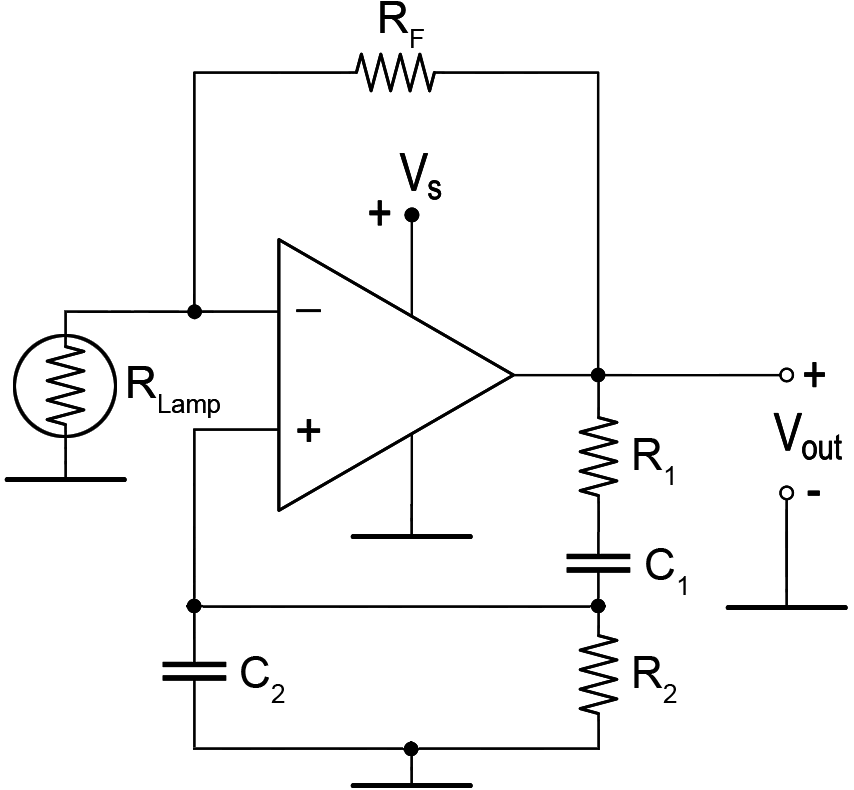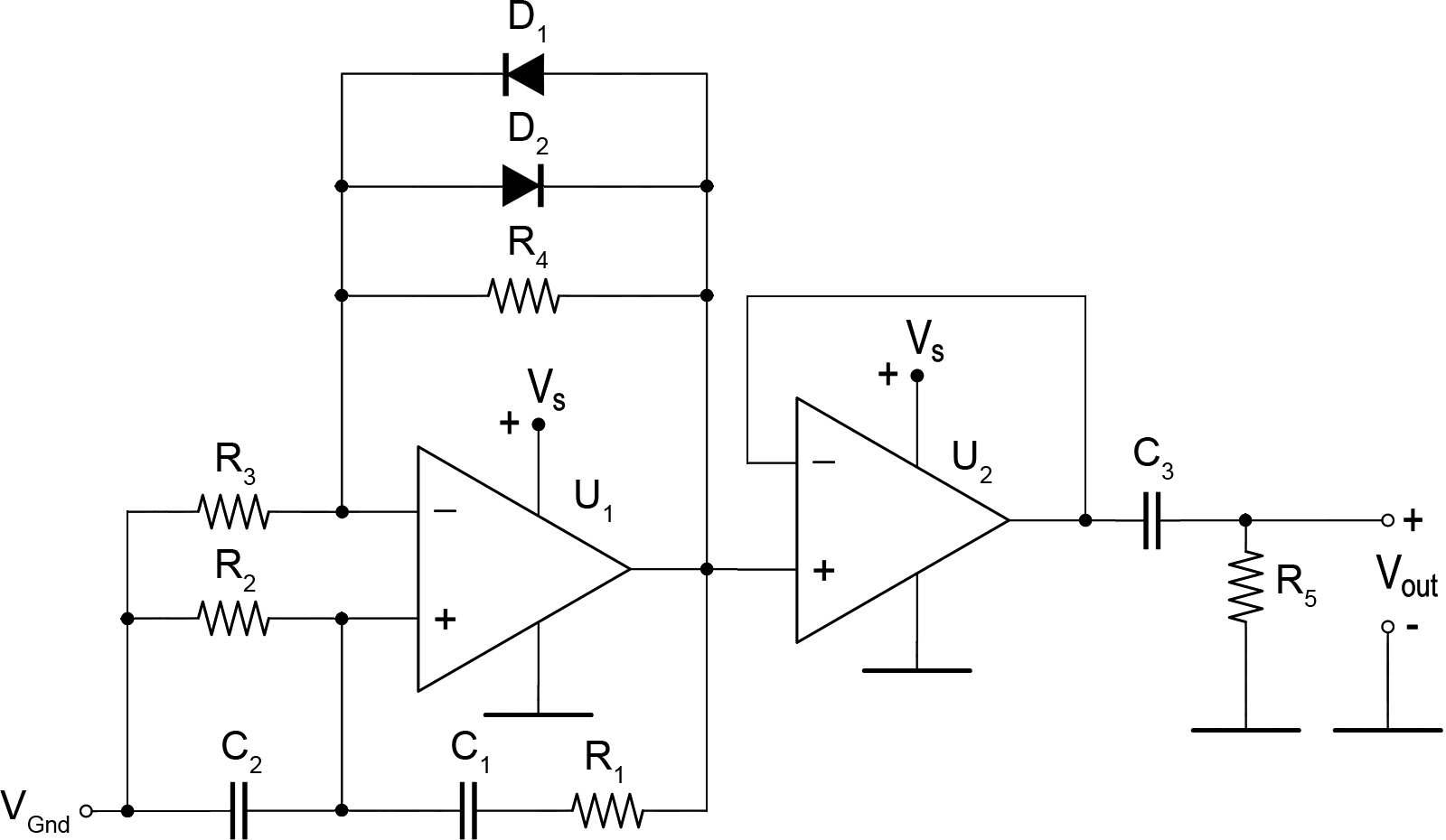| www.tmatlantic.com
Test & Soldering Equipment On-line Store |
|
D.E.V.I.C.E. (Wiki)Calculators Services |
|||||
Filter by first letter
|
Wien bridge oscillatorThe generator using an operational amplifier based on the Wien bridge is one of the simplest and most well-known. Fig. 1 shows the basic circuit of the generator. The advantage of this circuit is a small number of parts and high frequency stability.
The circuit has a disadvantage – the amplitude of the output signal approaches the value of the supply voltage, and this leads to saturation of the output transistors of the operational amplifier, which causes distortion of the output signal. There are several ways to minimize this disadvantage. Using nonlinear feedback can minimize the distortion inherent in the basic circuit of the generator based on the Wien bridge. You can use a nonlinear component, such as an incandescent lamp, in the circuit instead of the resistor RG, as shown in Fig. 2. The resistance of the lamp (RLamp) is chosen equal to half the feedback resistance (RF). In this case, the current flowing through the lamp depends on RF and RLamp. At the moment the supply voltage is applied to the circuit, the lamp is still cold and its resistance is low, so the gain will be large (more than three). As current flows through the filament, it heats up and its resistance increases, resulting in a decrease in gain. The nonlinear relationship between the current flowing through the lamp and its resistance keeps the output voltage change small – a small change in voltage means a large change in resistance. Distortion from such changes is significantly reduced compared to the basic oscillator circuit, since the op-amp output stage avoids severe saturation.
|
Site mapPrivacy policyTerms of Use & Store PoliciesHow to BuyShippingPayment




|




























